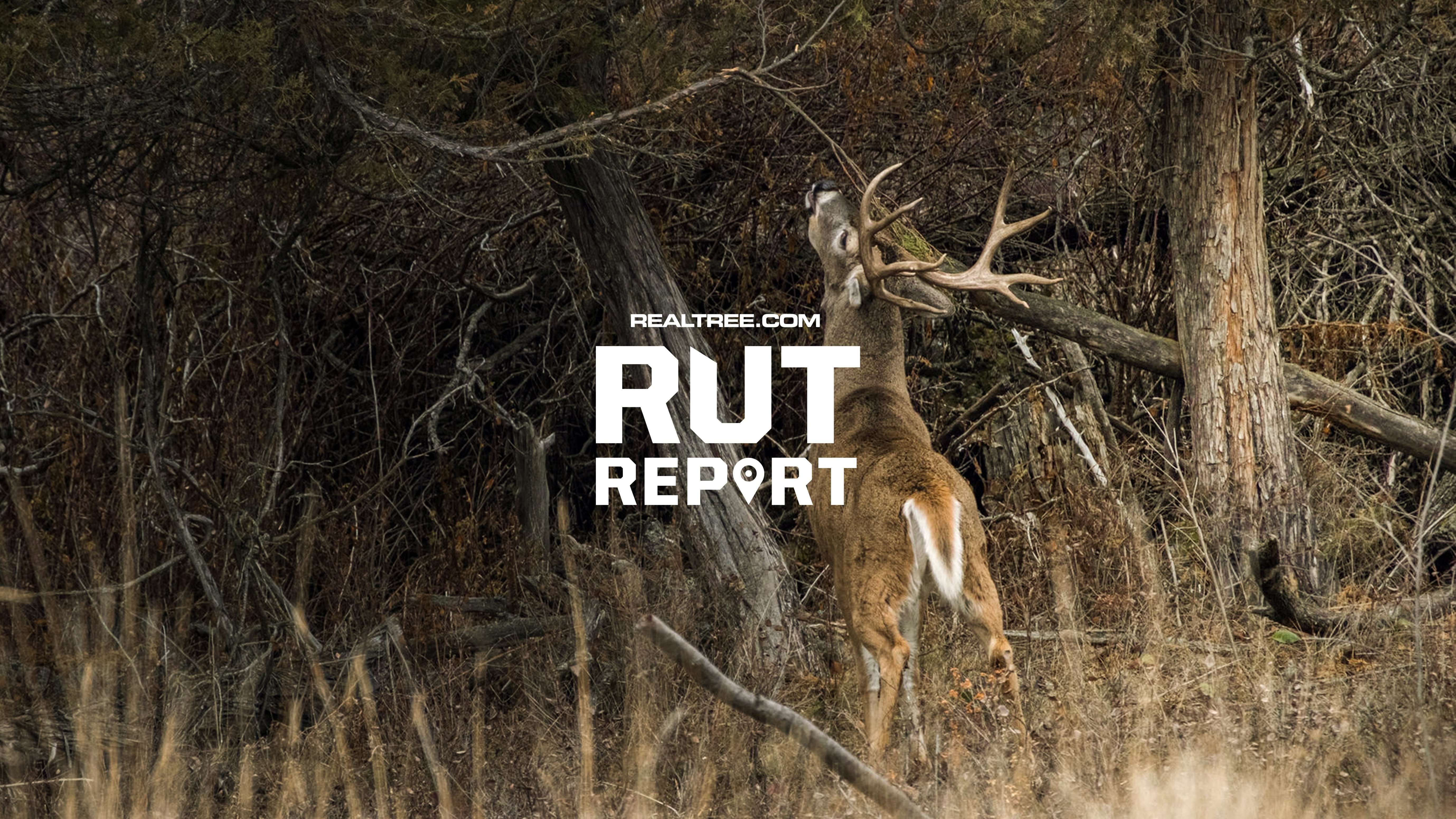Need to pass the time on stand, and maybe learn something along the way? This list of tips has you covered. Just remember to pay attention

Spend as much time as you can in the stand this season for your best shot at tagging a nice buck. Photo by John Hafner.
Bow season is right around the corner, and here’s our challenge to you this year: Hang tough on stand for as long as you can hack it each day. After all, you can’t shoot a buck or bull if you’re not in the woods when he walks by, right?
We know that between dawn and dusk there will be downtime — a lot of it some days — and you’ll probably scroll on your phone to pass the hours in a tree. You might as well spend time browsing this collection of next-level bowhunting tips. A few of them might help you kill a good buck with your bow this year. And just in case these tips aren’t enough, be sure to look back on the previous collection of 50 Bowhunting Tips (https://realtree.com/bowhunting/articles/50-bowhunting-tips-to-read-on-stand) we posted a few years back.
Just remember to look up every now and then and watch for deer.

Learn to shoot from your knees. It’s almost as stable as standing but provides a lower profile. Photo by John Hafner.
PART 1: SETUPS
1. Whether you’re seated in a tree stand or standing, you should be able to draw your bow smoothly while it’s pointed at the deer you’re fixing to shoot, without having to lift the bow or gyrate about to pull it. If you can’t draw and then let down easily if needed, you’re trying to shoot too much draw weight.
2. If you’re e-scouting a new public-land spot, look for sharply clustered topo lines near a creek or river bottom. Usually, this is where a hardwood ridge joins a softwoods bottom, and there’s almost always a good deer trail along the transition area. Play the morning thermals by looking for stand setups on the uphill side.
3. Most archers plan to spot-and-stalk mule deer in the early season, but an ambush can be more effective in some circumstances, same as it is for whitetails. Glass for muley bachelor groups, and try ambushing them early in the morning or late in the evening from a ground blind near a fence crossing, water hole, or alfalfa field.
4. If you’re going to sip coffee, read a book, or scroll through these 50 tips while on stand, have a plan for when a deer appears. Keep a big, secure pocket open and close so you can stash your comforts and grab your bow with minimal movement.
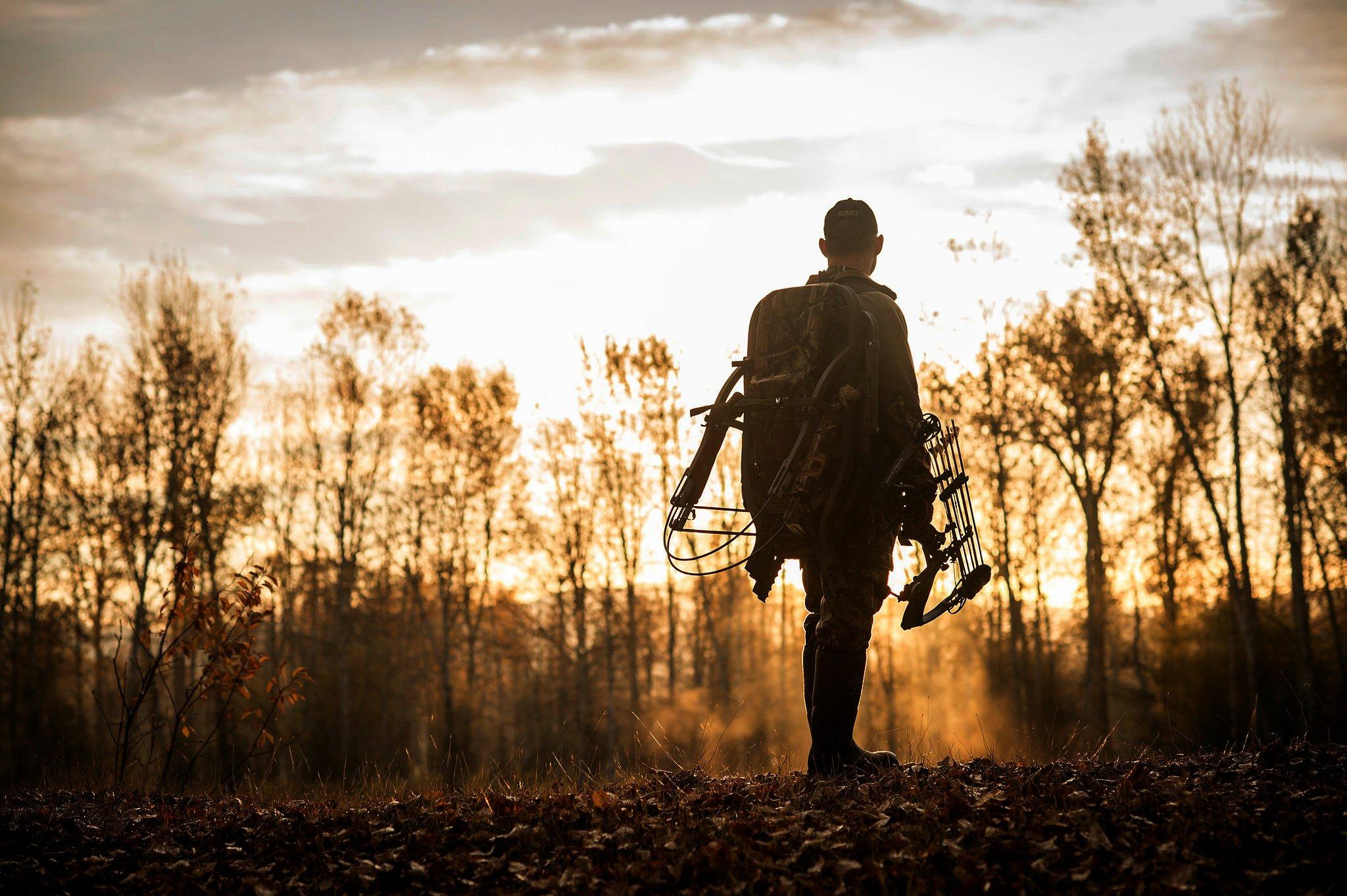
Don’t push your way into noisy or hard-to-reach spots, or you’ll risk blowing out deer. Photo by John Hafner.
5. It never hurts to take a break from bowhunting, sleep in, and recharge. But during the rut, it’s better to get in the stand at 8 or 9 a.m. and sit the rest of the day than to skip it entirely.
6. Antelope rut in September, and you’re missing out if you’ve never bowhunted for them. Try setting a ground blind near a fence gap between pastures where you know several pronghorn bucks live, and stake out a young buck decoy in your best shooting line. Antelope don’t like jumping fences and will come from miles to access a gap.
Don’t Miss: Basics for Bowhunting Mule Deer
7. If you’re hunting over tripod feeders, set them up near your stands several weeks before filling them. Scatter some corn on the ground nearby so deer slowly become comfortable with them.
8. If you’re baiting by pouring corn onto the ground, try scattering it alongside a log perpendicular to your stand so feeding deer are naturally inclined to turn broadside.
9. If you’re hunting from a climbing stand during the rut, keep your bow handy as you secure the stand to the tree. It can sound like a buck making a rub and cause other territorial bucks to charge in and investigate.

If a bugling elk is on his way, hurry into position and range landmarks as quickly as possible. Photo by Harry Collins Photography.
10. Is it OK to pee off your tree stand? Several deer biologists we’ve spoken to tell us that human urine is 95% water, and it does not spook deer. Some scientists go so far as to say that urine is a mammalian attractant that might pull in a curious deer.
11. If you bowhunt from the ground, set up in a small brush blind where deer will most likely walk past you at an angle, broadside or quartering-away. From a setup perpendicular to a game trail, you’re out of a buck’s line of sight as you lean up and draw your bow.
12. A solid tree about 15 inches in diameter is workable to get your arms around as you set steps, climb up, and hang a stand (wear a harness). When you’re on post, the tree is wide enough to break your outline, but thin enough so you can turn and look around and back for deer.
13. If you shoot right-handed, set a stand so the prevailing wind hits the left side of your body (vice versa for southpaws). You can draw an arrow with minimal movement when a buck shows up anywhere in a 180-arc in front of your stand.
14. If you hunt 200 acres but only 80 acres or so are conducive to quiet and hidden access to stands, concentrate your hunting in those reachable 80 acres. If you try to push your way into noisy, tough-to-reach spots, you’ll blow out deer and contaminate your ground.

According to studies, bucks move almost as much on rainy days as they do on dry days. Photo by John Hafner.
15. After you are harnessed into a stand, sit down, and lift and draw your bow; stand up and repeat. Saw or prune any limbs or leaf clusters that might grab a bow limb or knock an arrow off the rest and ruin your day.
16. If you happen upon an oak ridge or flat with several patches of “violent rubs,” hang a stand and hunt there. Freshly snapped sapling clusters or pine or cedar rubs with mangled lower limbs are the sign of an aggressive buck — the kind of deer you want to hunt.
17. It's great to hunt for a big deer in thick, gnarly cover, but don’t hang a stand where you can see only 40 or 50 yards. If your setup is too tight, a shooter buck might pop up too close. You might get rattled and make a wrong move or not have time to draw and shoot. Set your stand high and on an edge of thick cover, where you can see deer coming for 75 yards or more.
18. A little funnel or bottleneck that is not visible on a map can be a great place to kill a whopper with your bow. A good way to find those secret funnels is to vary your walks into and out of stand sites each day. Look for places such as a low spot in a wire fence, a tight creek crossing, or a 30-foot-wide strip of dry ground between two sloughs.
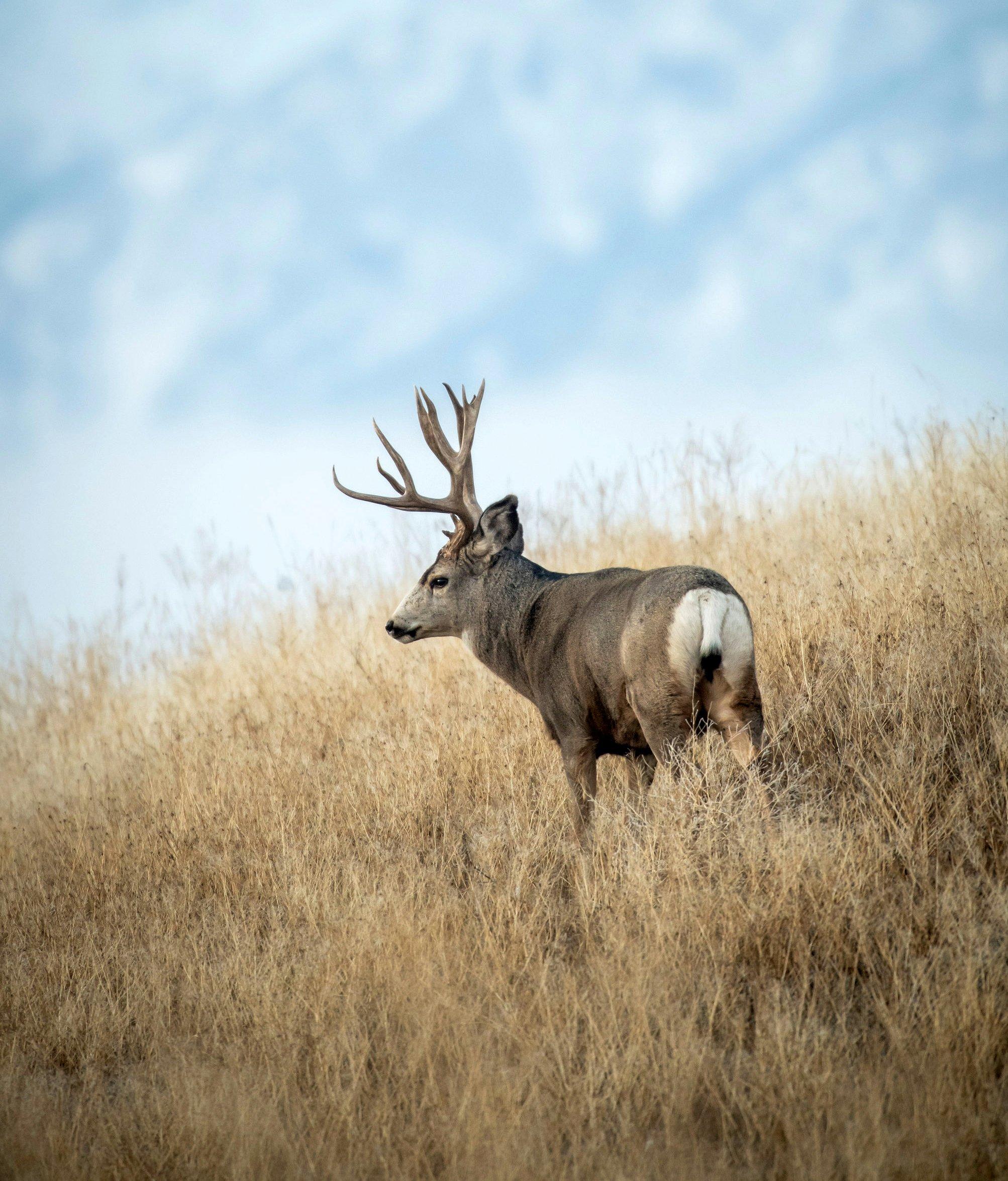
Try ambushing muleys early in the morning or late in the evening. Photo by John Hafner.
19. When a bull elk is bugling and on his way, make haste getting into a good shooting position, and range landmarks as quickly as possible. Don’t worry about shuffling in leaves or snapping small sticks; you will sound like a cow moving and that could help your chances, provided the wind is favorable. Many eastern whitetail hunters are too passive in the elk woods.
PART 2: THE SHOT
20. Use PBW to double-lung more deer: Pick a tiny spot on a buck behind the shoulder and a third to halfway up its side. Stay focused on that dot through your peep, and never peek up at the animal or the rack again. Bury the correct sight pin on that spot. This keeps your head down, lessening the chance you'll pull the shot high. Watch the fletching disappear into that hair spot. Follow through and fight the urge to drop your bow and jerk up your head to see if you got him.
Don’t Miss: 3 Overlooked States for Big Velvet Whitetails
21. Remember to draw your bow, aim and be ready to shoot an arrow before you ecck with your voice to stop a buck. If you stop a deer with a voice grunt first and then try to draw, only a miracle will keep you from getting busted.
22. After the thwack of the arrow, watch a buck run as far as you can see him. In woods, look for flashes of white as he flags away through the trees. In open country, follow him with your binocular if you can. Pick an obvious marker where you lose sight of the deer — a crooked tree, large rock, fence post, or similar feature. Climb down from your stand, walk to the marker and flag it. Look for blood, and pick up the trail there.

Draw your bow, aim and be ready to shoot an arrow before you try to stop a buck with your voice, or you’ll risk getting busted. Photo by Bill Konway.
23. If a deer scrambles 50 to 100 yards after the shot and then slowly walks away twitching its tail rapidly, that’s a sure sign of a liver hit or gut shot. It happens. That deer is probably about to bed down soon. Retrieve your arrow if you can do it without spooking the deer, but leave it if you can’t. Back out for several hours minimum before taking up the trail.
24. Bring toilet paper, and get comfortable pooping in the woods. And always bring your bow with you. A few seasons ago, Massachusetts hunter Chris Alberini arrowed a 195-inch buck at 10:30 a.m. while he was taking care of business.
25. A deer walking directly under your stand cannot see you without turning its head to look up. It’s a good time to draw your bow. Just be mindful of your shadows.
26. Learn to shoot from your knees. It’s almost as stable as standing but provides a lower profile. It’s a useful stance for whitetails, elk, gobblers, and just about anything else you might bowhunt from the ground.
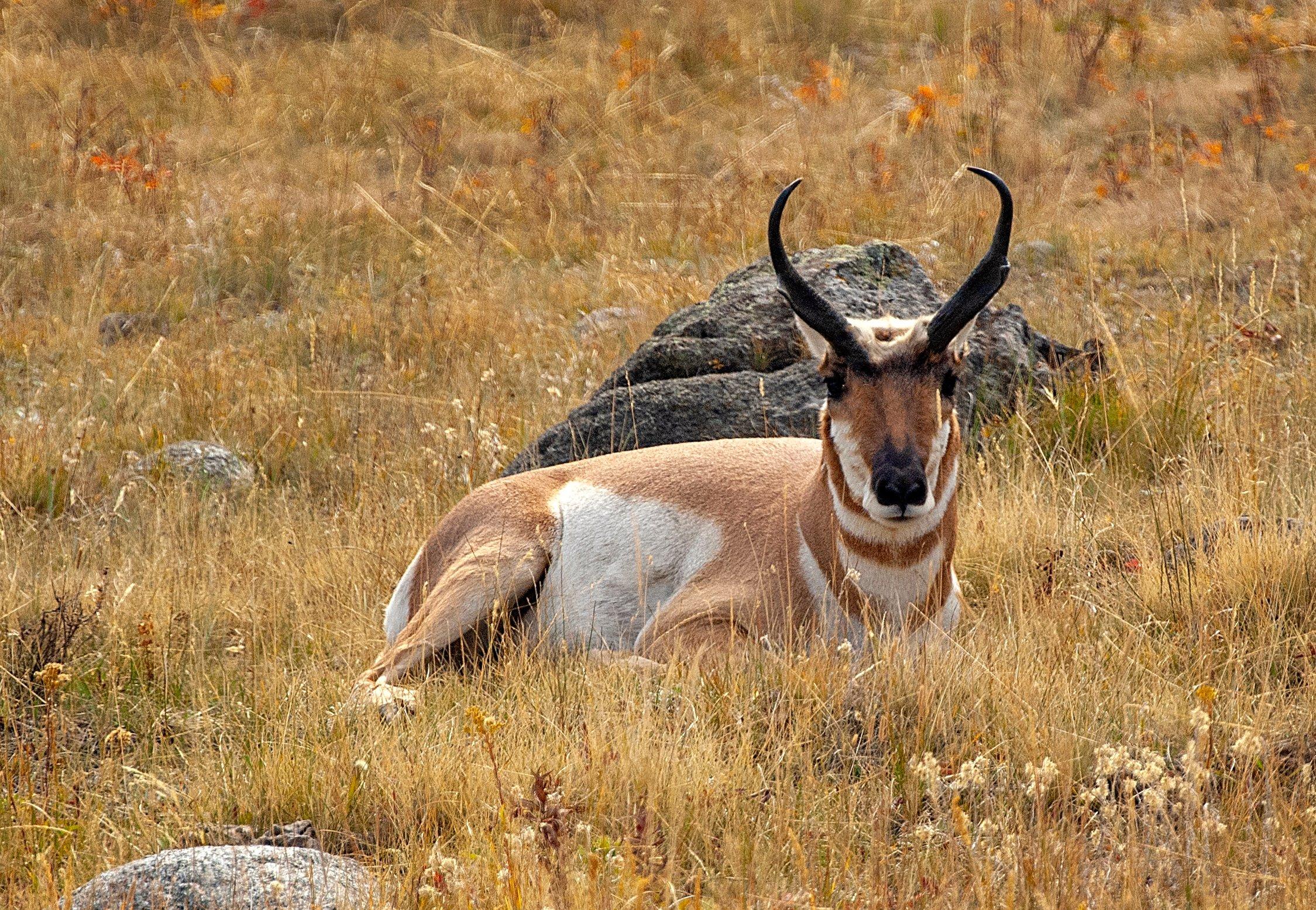
Set up a ground blind near a fence gap between pastures where pronghorn bucks live, and stake out a young buck decoy in your best shooting line. Photo by Chris Desoborough.
27. When in doubt, shoot that doe. It’s probably not going to ruin your hunt, it puts venison in the freezer, and it makes you a better hunter over the long haul.
28. If you hit a deer in the spine, it will fall immediately. Don’t worry about losing arrows, debate on climbing down to finish it with a knife, fist-pump for your self-filmed Youtube show or do anything else except grab another arrow and make a follow-up shot as quickly as possible. You owe it to the animal. And sometimes, those spine-shot deer get up and run away, never to be found.
PART 3: THE GEAR
29. The correct draw length of a bow, down to the half-inch, allows you to reach and maintain a comfortable and consistent anchor on every shot, whether at a target or a deer. The best way to determine your exact draw length is to go to a bow shop you trust and have a pro measure you.
30. Here are some tools to carry in your tree stand-hanging pack: vise grips, duct tape, WD-40, spare nuts and bolts, a hammer, a hatchet, wrenches and sockets, extra rope, carabiners, a hand saw, a multi-tool, and five to 10 extra ratchet straps.
31. Hunting early season bucks in velvet? Pack a roll of bubble wrap and some zip-ties in your kill kit to protect that velvet until you get it to the taxidermist.
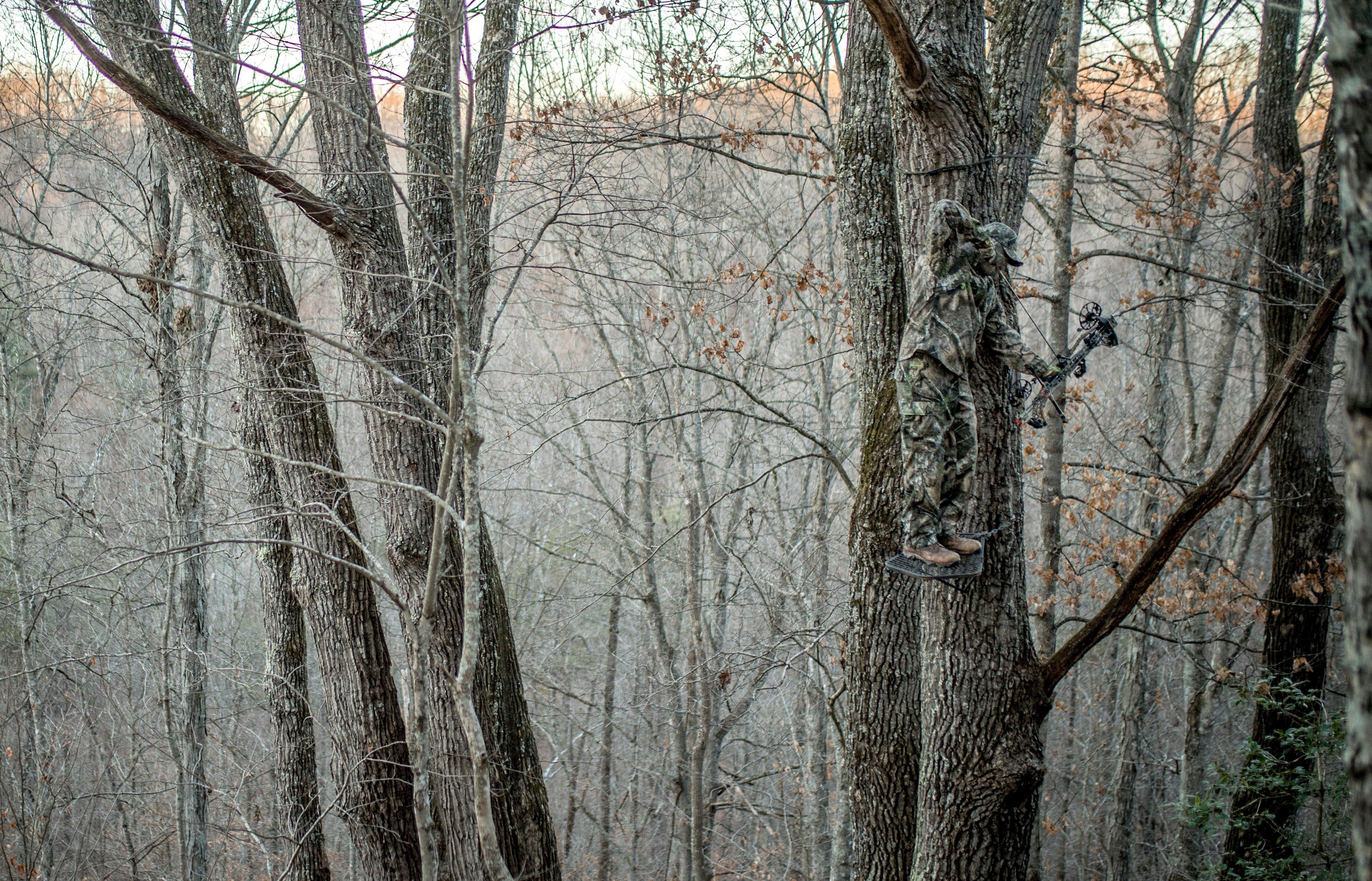
Follow through with your shot, and resist the urge to drop your bow and jerk up your head to see if you got him. Photo by Bill Konway.
32. You can change where your arrows hit by varying the way you hold your bow. Start with the common wrist-tilted-up grip, with fingers wrapped loosely around the bow. If arrows group a few inches left or right, experiment with other hand/wrist positions and pressure on the grip to see what effect they might have on arrow flight.
33. Roping your bow up and down from tree stands day after day can take a toll. Before and after each hunt, examine all bow components and accessories, paying particular attention to loose screws and excessive string wear.
34. Peep sight apertures are available in several sizes, and some hunters prefer a smaller size, such as 3/16 or 1/8, for more precise shooting at longer distances. But for close-range whitetails, it’s easier to see through a larger ¼-inch peep, especially in low light.
35. Most bowhunters use drop-away rests, and for good reason. But always keep a simple capture rest, like a Whisker Biscuit, in your kit in case your drop-away fails. They are the simplest and fastest rest to install and keep you in the game, even on a back-country hunt.
36. If you’re experiencing poor broadhead flight, check the spine of the arrows you’re shooting. Sometimes switching to something a bit stiffer — say from a 400-spine to a 340 — can make all the difference.

If a flock of turkeys comes by your stand, focus on the last calm bird for the best shot at taking one. Photo by Kelly vanDellen.
37. You can use a flat diamond stone to touch up fixed-blade broadheads, including single-bevel models. Color the edge of the broadhead with a black Sharpie and focus on carefully polishing that color away to maintain the proper sharpening angle.
38. Looking to increase your arrow’s front of center? Switching from a 100-grain broadhead to a 125 and pairing that with a weighted insert is the easiest way to do it.
Don’t Miss: 5 Ways to Increase Your Effective Bowhunting Range
39. Being able to lower your bow quietly is almost as important as being able to draw it, especially with today’s high let-off models. Carefully lowering your arrow and waiting for a better angle on a deer is frequently better than holding at full draw.
40. The lineman’s belt is an outstanding tool for hanging stands, but you can also use it for added security, in conjunction with a LifeLine, for leaning into an awkward shot angle with confidence from a lock-on stand.
41. Always bring at least two Realtree EZ Hangers with you; one for your bow and one for your pack.
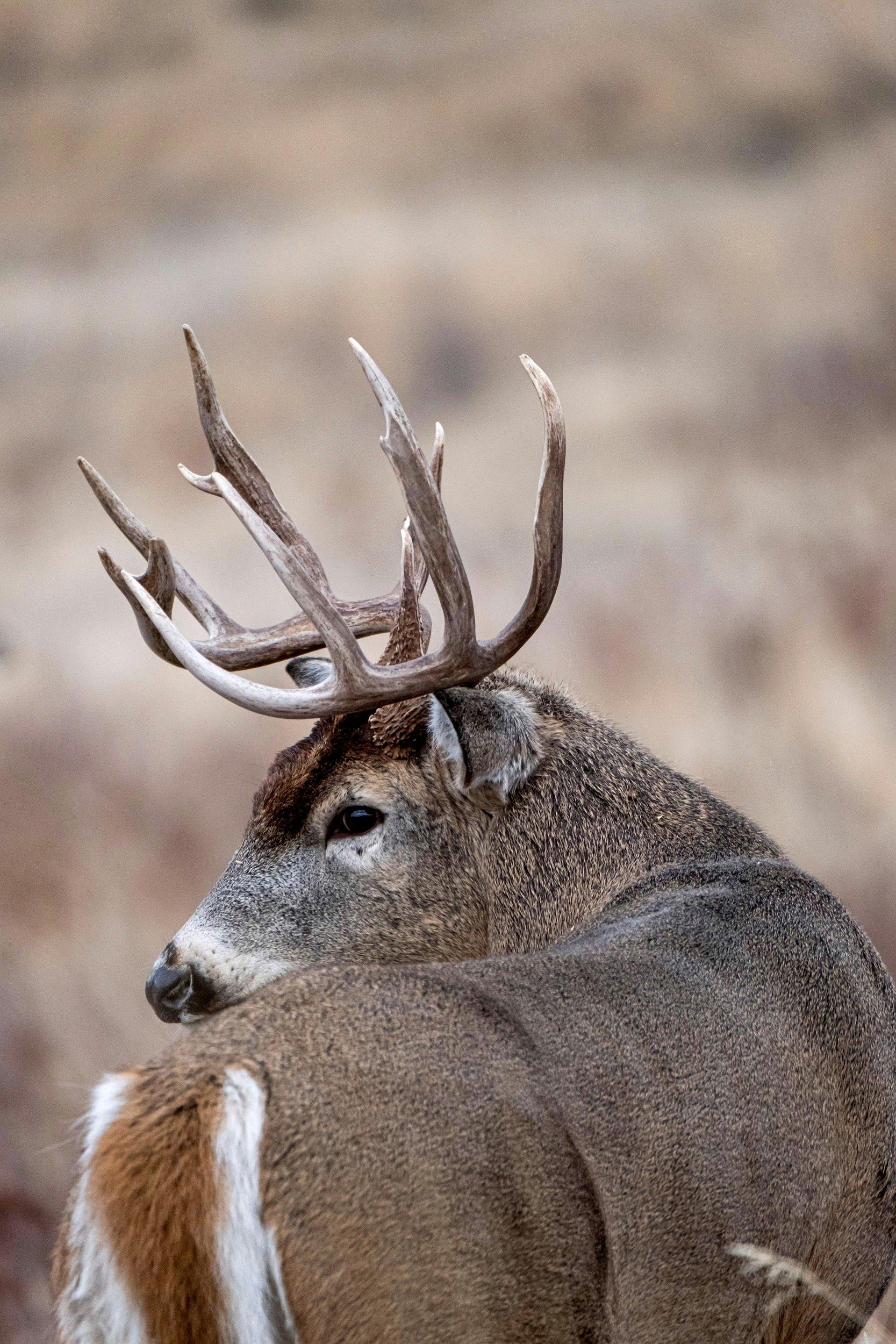
Research suggests that late-season bucks move an average of 55 yards farther from tree stands than they do early in fall. Photo by John Hafner.
42. If you’re using a wrist-strap release, consider switching to a hook style rather than one with jaws. It’s way faster to hook to a D-loop when adrenaline’s pumping.
PART 4: THE CRITTERS
43. Penn State researchers tracked GPS-collared deer for a month, during which it rained nine days, and 22 were dry. Bucks moved on average 8/10 of a mile on the dry days and 6/10 of a mile on the rainy days. Don't let the rain keep you out of a stand.
44. In many states, fall archery turkey seasons overlap with archery whitetail seasons. If a flock of turkeys files by your stand and you have a tag and want to shoot, draw when the last one in line is behind a tree. The lead birds might see you and putt, but you’ll usually get a few seconds to shoot the last calm bird in line before the others scatter.
45. Whitetail deer love to mingle in mid-size points of timber that are tucked into the bends and curves of streams or rivers. If there are crop fields nearby, perfect. Deer coming and going to the feed will use a couple of main trails that converge in and around the timber cover in the bend. It’s a great post for late October and into November, when you’ll see massive scrapes and rub lines on and near the doe trails.
46. Biologists at the University of Georgia found that while one set of scrapes might go stone cold, several bucks and does might tear up scrapes on a ridge or in a bottom only 100 yards away. Keep looking for the freshest, rankest scrapes, and hang a stand for a quick ambush.

Set your stand high and on an edge of thick cover, where you can see deer coming for 75 yards or more. Photo by Bill Konway.
47. Researchers at North Carolina State tracked GPS-collared does and bucks throughout the four lunar phases, and found that whitetail movement is most extreme during the last hour of daylight during a last-quarter moon phase. Try cutting out of work early on and around the last-quarter moon days of Oct. 24 and again Nov. 22 this year. Hunt those prime last hours from stands near food sources.
48. In an animal vision study at University of California-Berkeley, researchers found deer have cyclovergence, meaning their eyes can rotate in different directions. Cyclovergence keeps the horizontal bands of vision in each eye aligned and level, maintaining a deer’s panoramic view of its surroundings, even while its head is tilted down to feed, or when a buck is nose down on a doe trail. Whether on the ground or 20 feet up a tree, be super careful when you move and draw your bow.
49. Tracking 37 GPS-collared bucks for three years in South Carolina, researchers found that late in hunting season, the bucks moved an average of 55 yards farther away from tree stands than they did early in fall. The deer had seen, smelled and sensed humans in and around those stands through the weeks and months, and they had skirted those spots right out of bow range. Your remedy: Late in the year, pull and move some of your stands 50 to 75 yards (or use a climber), and surprise a skittish buck from a new spot.
50. “Our tens of thousands of cam photos from Iowa show that late in the season, mature bucks regularly move in and use blocks of timber with a heavy mix of evergreen trees because the conifers provide increased security and thermal cover,” said whitetail biologist Mickey Hellickson, who advises hunters to set cameras and tree stands in a conifer-heavy habitat in December.





